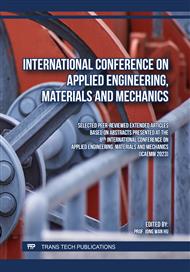p.45
p.55
p.73
p.79
p.89
p.99
p.105
p.111
p.119
Growth in the Worldwide Stock of E-Mobility Vehicles (by Technology and by Transport Mode) and the Worldwide Stock of Hydrogen Refueling Stations and Electric Charging Points between 2020 and 2022
Abstract:
This study discusses the portion of fuel cell electric vehicles (FCEVs) in the worldwide stock of vehicles on roads, particularly when compared to plug-in electric vehicles (PEVs), which comprise battery electric vehicles (BEVs) and plug-in hybrid electric vehicles (PHEVs). The study considers the overall number of these e-mobility (electric mobility) vehicles, as well as within each of 4 transport modes, namely: (1) passenger light-duty vehicles (PLDVs or simply “cars”), (2) light commercial vehicles (LCVs or simply “vans”), (3) buses, and (4) trucks. The study also investigates the progress in the number of hydrogen refueling stations (HRSs) for FCEVs, and contrasts that with electric charging points (ECPs) for PEVs; during the years 2020, 2021, and 2022. While the number of worldwide FCEVs nearly doubled in 2022 compared to 2020, the ratio of FCEVs to PEVs declined from 0.3348% in 2020 to 0.2738% (less than 0.3%) in 2022. In 2022 also, the number of FCEVs was 0.3914% (less than 0.4%) of the number of BEVs, and 0.9113% (less than 1%) of the number of PHEVs. The worldwide fraction of PEVs with respect to the total vehicles (both electric and non-electric) in 2022 was approximately 1.816% (split into 1.2704% for BEVs and 0.5456% for PHEVs), while the fraction of FCEVs was approximately 0.0050% (only 5 FCEVs per 100,000 vehicles). In terms of the convenience to supply the vehicles with energy, the number of worldwide hydrogen refueling stations nearly doubled in 2022 compared to 2020. Similarly, the worldwide number of electric charging points for use with PEVs nearly doubled in 2022 compared to 2020. However, the ratio of HRSs to ECPs declined from 0.0415% in 2020 to 0.0378% in 2022. The worldwide average FCEVs per HRS in 2022 was 70.69, while the worldwide average PEVs per ECP in 2022 was 9.75. Thus, PEVs are much more attractive than FCEVs for a driver concerned about the network of hydrogen stations. Furthermore, owners of PEVs have an additional option of recharging their vehicles at home (which is not applicable for FCEVs). Between 2020 and 2022, PEVs were dominated by BEVs, with 69.95% of PEVs being BEVs in 2022. This 2022 fraction of BEVs in PEVs reflects a consistent increase from the 2021 fraction (68.34%) and from the 2020 fraction (67.23%). Considering the worldwide increase in these e-mobility vehicles from 2020 to 2022, the number of FCEVs increased by a factor of 2.072, PHEVs increased by a factor of 2.322, and BEVs increased by a factor of 2.636, PEVs increased by a factor of 2.533. Thus, out of the 3 e-mobility vehicle technologies (FCEVs, PHEVs, and BEVs), BEVs had the strongest presence as well as the fastest growth.
Info:
Periodical:
Pages:
89-96
Citation:
Online since:
December 2023
Authors:
Permissions:
Share:
Citation:



